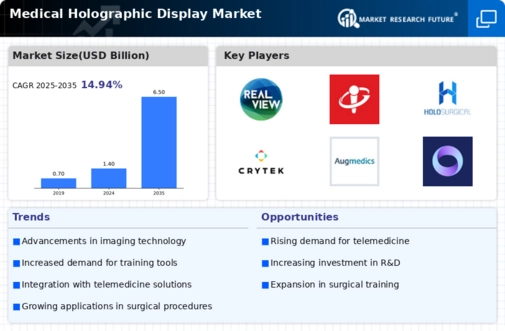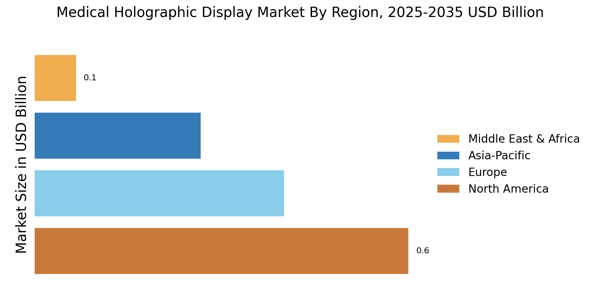The Global Medical Holographic Display Market is characterized by rapid advancements and increasing demand for innovative medical imaging technology that enhances visualization in clinical settings.
The competitive landscape showcases numerous players striving to harness the potential of holographic displays, which offer significant advantages for medical professionals by providing three-dimensional visualizations essential for accurate diagnostics, surgical planning, and education.
As health systems increasingly look to improve patient care and procedural accuracy, the market is witnessing a growing trend toward integrating augmented reality and holography into medical applications.
The rising adoption of these technologies is augmented by a concerted effort from manufacturers to develop cost-effective, user-friendly solutions that seamlessly integrate into existing workflows, facilitating a competitive environment where innovation plays a key role in market differentiation.
RealView Imaging has carved a niche for itself within the Global Medical Holographic Display Market by leveraging its unique capabilities in volumetric imaging. The company's strength lies in its advanced holographic technology that enables clinicians to visualize complex anatomical structures in real-time without the need for cumbersome headgear or special glasses.
RealView Imaging's solutions provide healthcare professionals with the opportunity to interact with holographic images, improving spatial awareness during surgical procedures and diagnostics.
By focusing on user experience and clinical utility, RealView Imaging fosters a competitive edge by driving the acceptance of holographic displays across various specialties in medicine, positioning itself as a leader in this burgeoning field.
Invivo, another key player in the Global Medical Holographic Display Market, is recognized for its commitment to integrating cutting-edge imaging technology into medical practices. The company excels in developing high-quality visualization solutions tailored specifically for the healthcare sector.
Invivo provides advanced imaging capabilities that enhance the interpretation of medical scans, thus improving patient outcomes. With a strong emphasis on collaboration with healthcare professionals and a robust research and development strategy, Invivo consistently advances its technology to meet the evolving needs of the medical community.
This strategic focus enables the company to maintain a significant market presence, ensuring that their holographic display solutions meet rigorous standards for efficacy and safety in critical applications.
Their ability to innovate and adapt to market demands positions Invivo favorably in a competitive landscape driven by rapid technological progress and the continuous quest for improved medical visualization.

















Leave a Comment